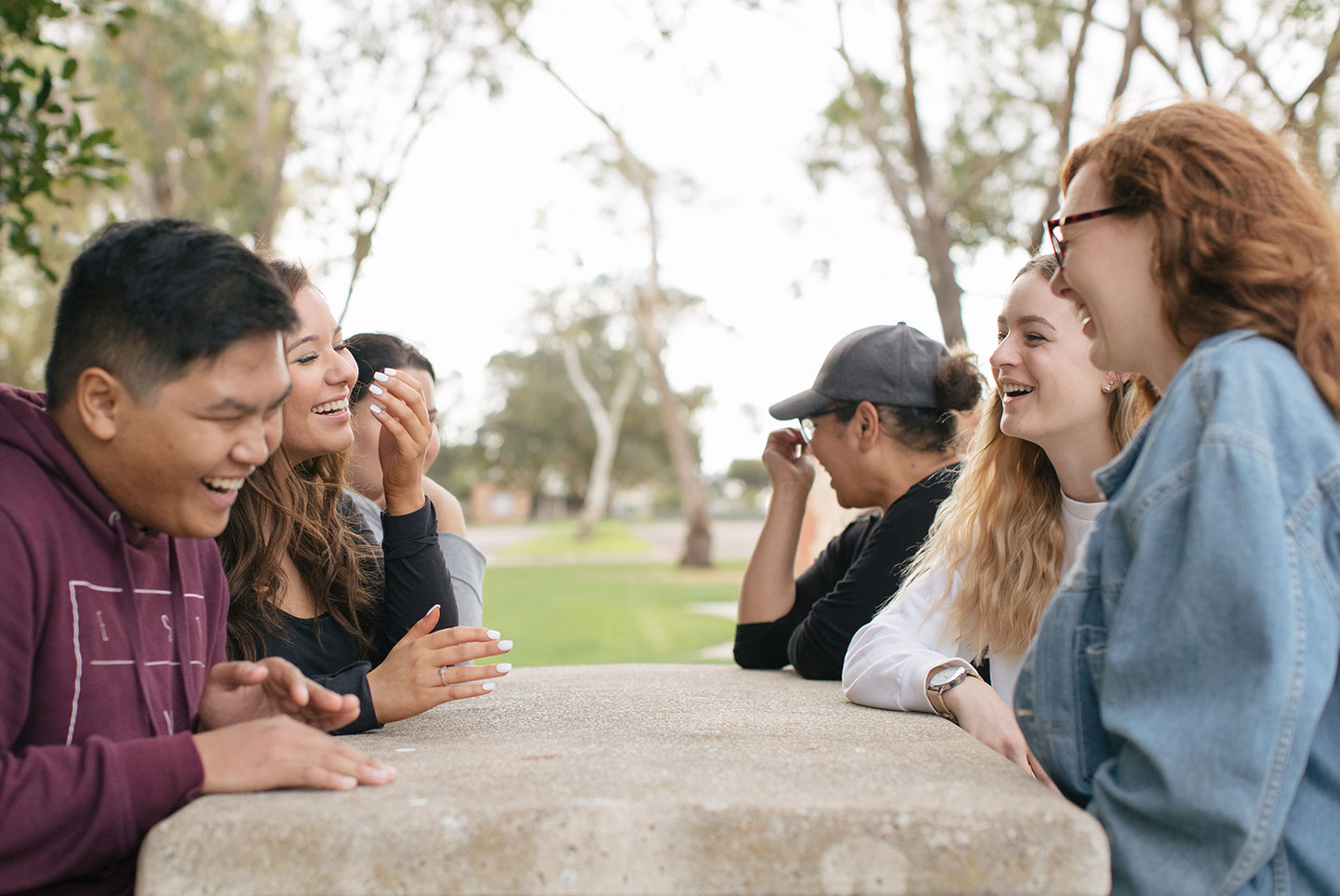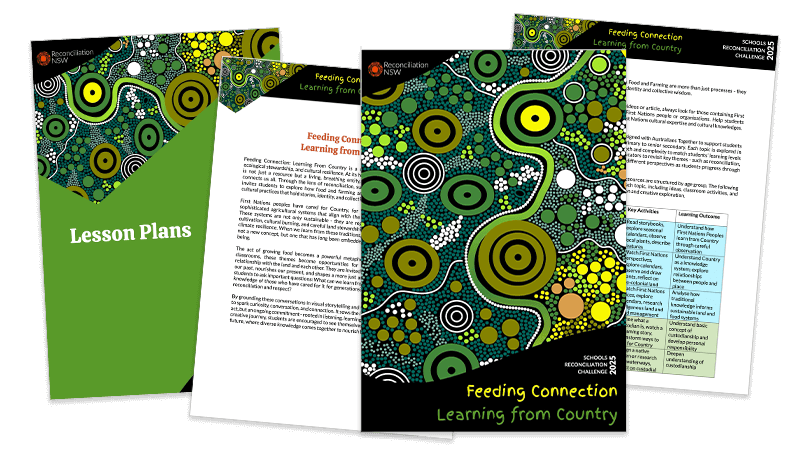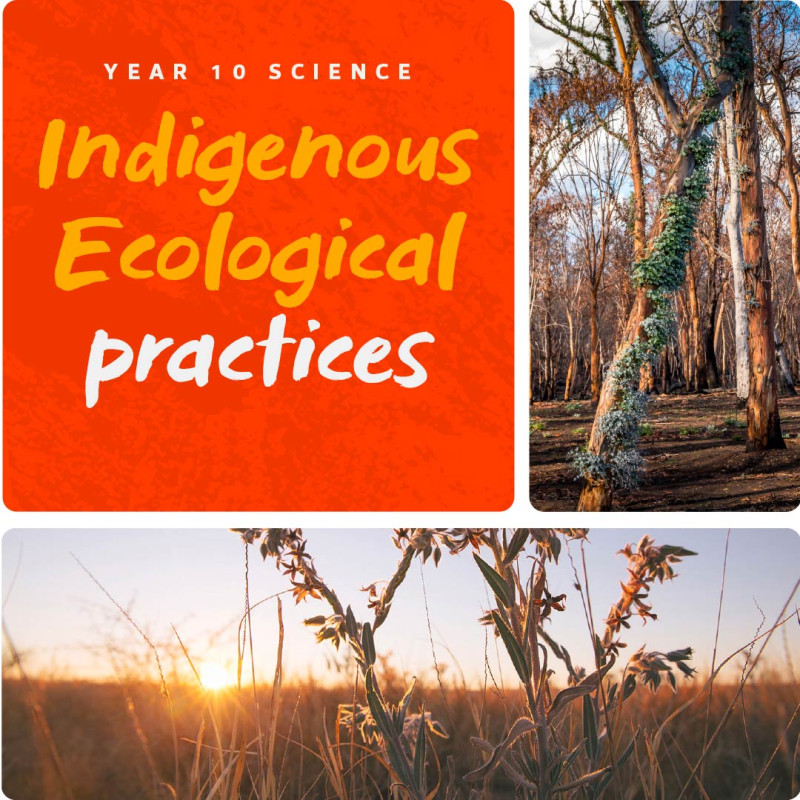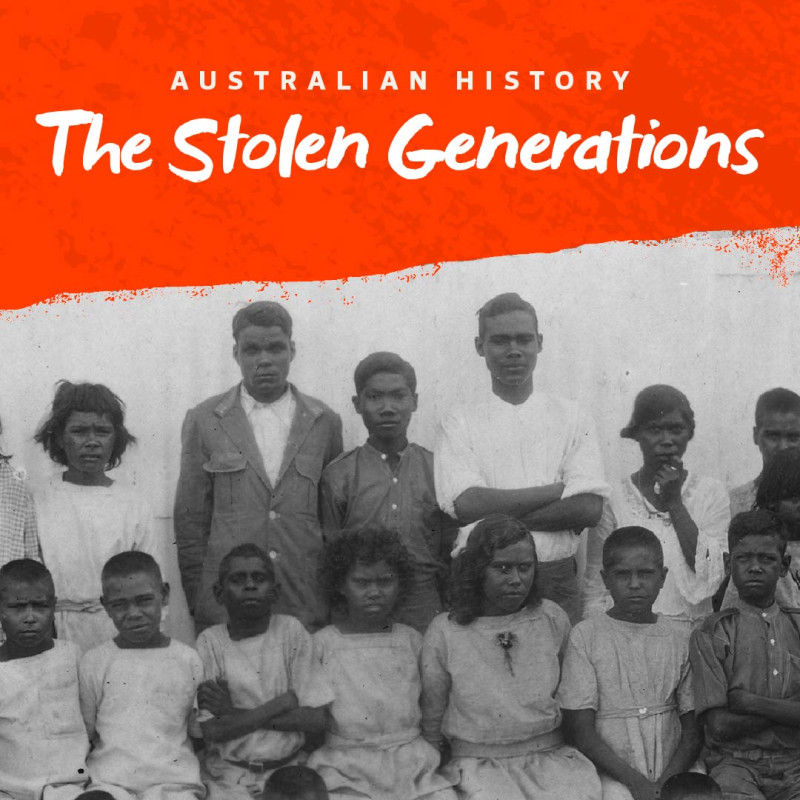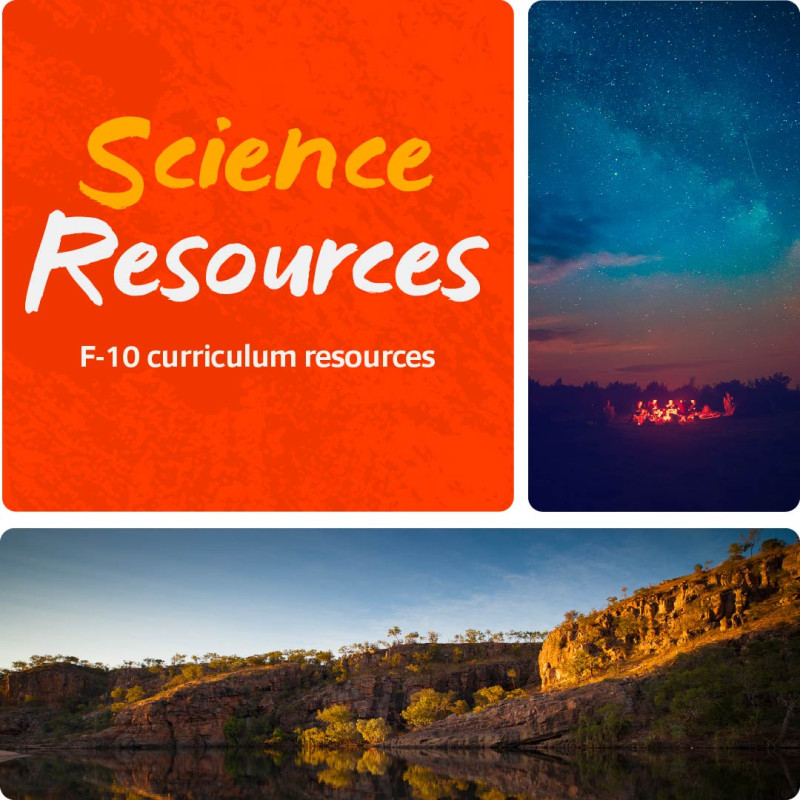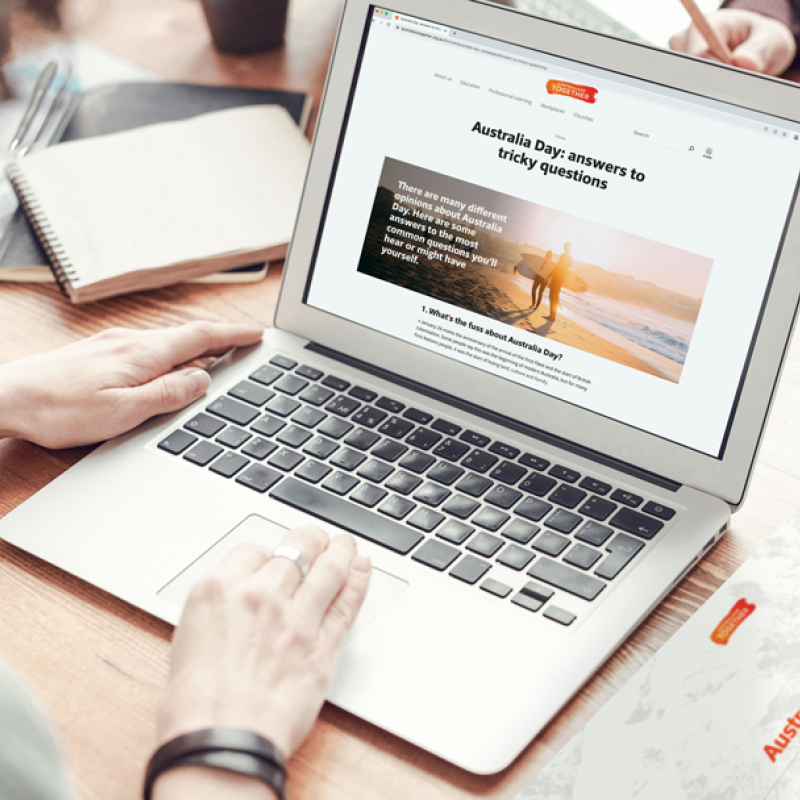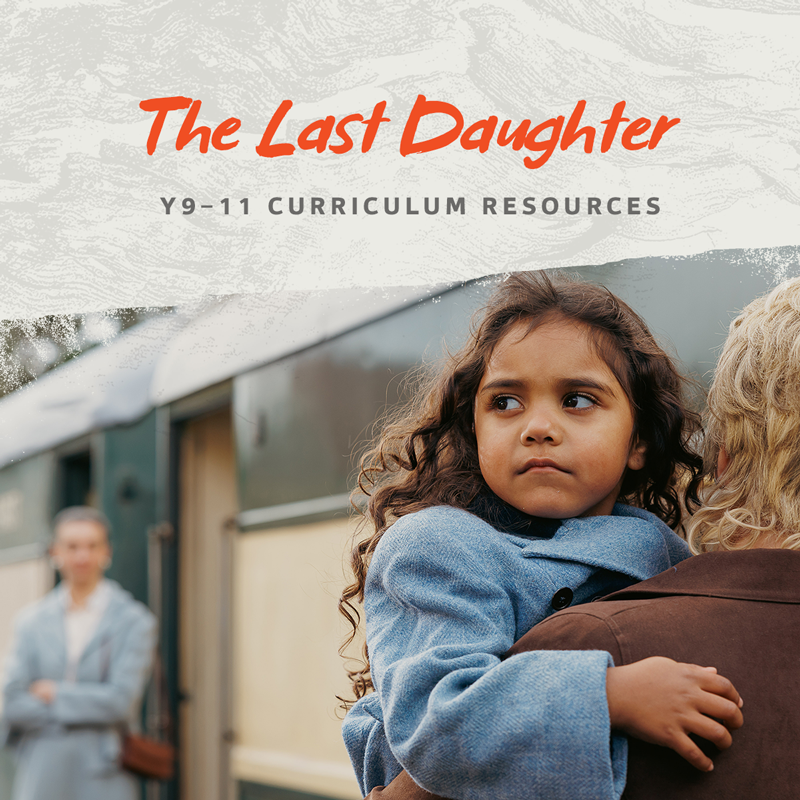
NEW - Learn and Do resources
Ready-to-go activities, to save you time and engage your students
Find out moreThe Last Daughter
Y9 & 10 English – Key messages of the film
The inspiring documentary film, The Last Daughter, follows Brenda Matthews, a proud Wiradjuri woman. As Brenda explores her sense of disconnection and uncovers the truth and trauma of her past as a stolen child, she also begins to reconcile her two families and two cultures. In this lesson, students explore the key messages of her story.
with cool.org.
Y9 & 10 English, Y9 History, Y10 Civics and Citizenship – Truth-telling
The histories we value help to determine how we create our future. In this lesson, students learn about the place of truth-telling in the process of reconciliation through The Last Daughter film. Students assess sources for accuracy, balance and cultural appropriateness to determine which are most likely to share truth or bias.
with cool.org.
Y9 & 10 English, Y11 Modern History – Stolen children
In The Last Daughter, Brenda Matthews explains that she and her siblings were taken from their parents after the NSW Assimilation Policy was abolished – stolen, while not technically part of the Stolen Generations. In this lesson, students learn more about this complex situation and explore its impacts on the identity of those affected.
with cool.org.
Y9 & 10 English, Y9 History, Y11 Modern History – Intergenerational Trauma
Through clips from The Last Daughter documentary, students explore how the forced removal of Aboriginal and Torres Strait Islander children from their families causes trauma to flow through generations, with serious long-term impacts. They research a specific event from the Healing Foundation timeline and share their findings.
with cool.org.
Y9 & 10 English, Y9 History, Y11 Modern History – Protecting children (part 1)
In this lesson, students explore the need for reparations and concept of self-determination and why it’s important for the healing of First Nations Peoples. They examine child removal legislation. Students reflect on the story of Brenda Matthews, a proud Wiradjuri woman who was forcibly removed from her family at the age of two.
with cool.org.
Y9 & 10 English, Y9 History, Y11 Modern History – Protecting children (part 2)
In the previous lesson, students examined previous and current child removal legislation, and explored the concept of self-determination. Through clips from The Last Daughter, students focus their learning on how Brenda Matthews's experience sits in reference to the overarching acts that governed families during her childhood.
with cool.org.
Y9 & 10 English, Y9 History, Y11 Modern History – Power and control
In this lesson, students explore the concept of autonomy and consider the rights and treatment of Aboriginal and Torres Strait Islander Peoples during the 1970s. Students connect this learning with the story of Nan Brenda, an Aboriginal woman whose children were taken from her, through clips from The Last Daughter.
with cool.org.
Y9 & 10 English, Y9 & 10 Health and PE – Exploring identities
In this lesson, students unpack the five elements of identity and culture that make them who they are. They consider First Nations perspectives to uncover the importance of culture, exploring the story of Brenda Matthews in the feature-length documentary, The Last Daughter. Students get creative with an identity collage.
with cool.org.
Y9 & 10 English, Y9 & 10 Health and PE – What makes a family?
In this lesson, students consider the many forms that family can take and the impacts that family has on personal identity. They reflect on the extended and varied family structures of proud Wiradjuri woman, Brenda Matthews, the central figure of the feature-length documentary, The Last Daughter.
with cool.org.
Y9 & 10 English, Y9 & 10 History, Y10 Civics and Citizenship – The road to reconciliation
The Last Daughter film is a powerful story because it shows the ways Brenda Matthews's families unite to begin to overcome the trauma they experienced due to government policies. In this lesson, students focus on each family's path to healing and consider what it means to be an ally to First Nations people.
with cool.org.
Key Dates and Topics
F-Y10 Science Week 2024
Aboriginal and Torres Strait Islander cultures have a long and continuing history of innovation and knowledge relating to this year’s Science Week theme, ‘Species Survival – More Than Just Sustainability’. Use these Australian curriculum aligned, free resources, including ready-to-use lesson plans, activities and assessment ideas to engage your students.
Separation – Ruth’s story: F–Y10 activity guide
The activities in this guide help build an understanding of the Stolen Generations through Aunty Ruth Hegarty’s story about separation. Activities move students from simpler concepts and responses to more complex. Select and/or adapt questions and activities based on your students’ ages and capabilities.
NAIDOC Week 2023 – F-Y10 Understanding Eldership
This NAIDOC Week, watch the Understanding Eldership video with your students and then use this Activity Guide to explore the video in more detail using the discussion questions and activities provided. These questions and activities are suitable for students from Foundation to Year 10.
NAIDOC Week 2021
Early Years
Early Years Hello Country, hello friends
This resource guides early learners through welcoming ceremonies inspired by Aboriginal and Torres Strait Islander practices, using songs, stories, art and shared rituals, to foster respect, connection and a sense of belonging in culturally rich and engaging ways.
Early Years Play
In these activities, children learn about ways play connects us all, and about toys played with by First Nations children. They get to play First Nations games and make their own toys using natural materials. Children will begin to understand the ways we can all connect with Country through play.
Early Years Seasons
In these activities children learn about First Nations Peoples knowledges of seasons and the diversity of Indigenous seasonal calendars. Children explore their environments, learn some local First Nations words and phrases, how to care for Country and how Country can inform our activities.
Early Years Astronomy
Children begin to learn about First Nations Peoples’ knowledges of astronomy – stars, constellations and phases of the moon. Children investigate Dreaming stories relating to the stars and learn local First Nations words. They engage creatively in hands-on activities and opportunities for play.
Early Years Kinship
This resource explores the connections that exist between both family members and wider community networks. Through learning about First Nations kinship systems children build their understandings of the ways connections can contribute to an individual’s identity, feelings of belonging and overall sense of wellbeing.
Early Years Country
The activities in this guide help children begin to understand First Nations Peoples’ deep connection and reciprocal relationship with Country. Children develop an appreciation for the diversity of the Country they’re located on through observation and play-based investigation as well as consider the ways they can take care of Country.
Foundation
Foundation Science & English – Observing features of living things
Students identify the differences between living things, non-living things and once living things, and observe living things in nature using their senses. They explore how First Nations Peoples observe and communicate knowledge of physical features of living things.
Foundation HASS & Maths – Taking care of special places
Students recognise and reflect on the importance of their own special places, as well as their families’. They learn about local sites of importance and identify their features. Students learn the meaning of Country, as well as how to care for Country.
Foundation Science & Design and Tech – Materials on Country
Students explore the relationship between various materials and their respective properties. They investigate the knowledges First Nations Peoples have about combining different materials for different purposes, and how the properties of materials affect their use.
Foundation English, Dance & Media Arts – First Nations storytelling
Students are introduced to a variety of First Nations stories and different ways that stories can be told, such as through dance or oral storytelling. Students consider the messages or lessons found in both familiar and less-familiar stories and connect with the ways stories can bring us together.
Foundation HASS, English, Health and PE & Dance – Exploring families, kinship and home
Starting with their own families, students explore ways of understanding family. They consider First Nations families and kinship and think about their own family as a continuous unit over time. The concept of Elders is used to highlight that everyone needs people who help them learn and be safe.
Foundation Maths & Visual Arts – Shapes on Country
Students explore geometric and organic shapes in their everyday life, analysing how First Nations Peoples use shapes and symbols to communicate knowledges and information.
Foundation English & HASS – Stories, families, places: belonging forever and ever
Foundation Science & HASS – Caring for Country: how Indigenous scientific observation and cultural practices support ecosystems
Foundation Maths – Estimating, counting and adding: connecting number words, numerals and quantities
Foundation Science & Health and PE – Bush toys: investigating how size and shape affects movement
Year 1
Y1 English, HASS & Digital Technologies – Stories in the sand
Students learn about the different ways stories can be told, and view First Nations stories shared through the drawing of symbols and imagery in sand. Students explore how animals can be represented in stories, and share their own stories by drawing in sand and using technology.
Y1 English, Music & Dance – Storytelling through song and dance
Students explore the many ways stories can be told in First Nations cultures. They explore the cultural and educational role stories play and engage in processes of retelling and creating stories about our world and our experiences using elements of music, movement and dance.
Y1 Science, Design and Technologies & Maths – First Nations toys and games
Students play First Nations games, discover First Nations toys and investigate the forces of pushing and pulling through movements such as throwing, hitting, spinning and rolling. They design and make a toy using natural materials applying their knowledge of forces and First Nations games.
Y1 Maths & Visual Arts – Patterns in First Nations cultures
Students explore the patterns linking their world with First Nations cultures, investigating patterns in nature, storytelling, language and counting systems. Students identify, create and interpret patterns, with a focus on the meaning and value in patterns for First Nations Peoples.
Y1 Science & English – Knowing Country
This unit explores the important information First Nations Peoples collect and communicate from observing the natural environment. Students will identify and make connections to what we observe, why we observe, how we observe and ways to communicate observations.
Y1 Science & HASS – Observing and living with the seasons
Y1 Science, HASS & Visual Arts – How Indigenous knowledge is represented and communicated through art and design
Y1 English, HASS & Drama – First Nations societies before colonisation: Dreaming, living, using waterways
Y1 English & Science – Tracking meanings from cultures and Country
Year 2
Y2 Visual Arts – Female First Nations artists
Students explore the ways female First Nations artists use visual conventions to convey meaning in their artworks, how their art is inspired by Country, and the ways they use art to share First Nations cultures. Students experiment with different artistic styles to create their own artworks.
Y2 HASS & Design and Technologies – Bush foods
Students explore First Nations bush foods, making connections to the seasons, environment and food availability. They investigate agriculture methods used by First Nations people to sustainably grow and harvest bush foods. Lastly, they design a bush food dish and share their dishes and knowledge.
Y2 Science, Design and Tech & HASS – Exploring changes to materials
Students investigate ways materials can be physically changed through hands-on learning. They develop understanding by predicting, observing and discussing the results of changes. Students learn about changes First Nations Peoples make to natural materials and use this knowledge, and exploration, to design their own object from natural materials.
Y2 Maths, Science & Visual Arts – Measurement on Country
Students explore length using both variable and uniform informal units of measurement and investigate ways First Nations people use measurement in everyday life. Students create a weaving artwork using informal measurement to share their learning with others.
Y2 Science & Media Arts – Patterns in astronomy
Students explore how cultural stories of First Nations Peoples of Australia describe the patterns in the changing positions of the sun, moon and stars. Students recognise that astronomers use patterns of movement of celestial objects in the sky.
Y2 English & Health and PE – Words that welcome, acts that acknowledge
Students explore the meaning behind the Welcome to Country and Acknowledgement of Country protocols and how we can use these protocols, meaningfully, to show respect for the relationship between First Nations people and Country.
Y2 HASS & Science – Indigenous toys used by Aboriginal and Torres Strait Islander children
Y2 English & HASS – Exploring texts by Indigenous authors
Y2 Maths & HASS – Grouping, partitioning, rearranging and measuring distance in everyday life
Year 3
Y3 HASS, Maths, Digital Technologies & Visual Arts – Maps and their stories
Students explore maps as tools for understanding the spaces they occupy, and interpret different kinds of maps. They discover the ways First Nations Peoples make, use and share maps, and what this can tell us about our place in the world, and show their understanding by creating their own maps.
Y3 Visual Arts, HASS & English – Showing connection to Country through art
Students explore First Nations Peoples’ connection to Country and how it can be depicted through art. Students experience Country by observing and discussing the work of Bundjalung artist Bronwyn Bancroft, and express their own connections to special places using artistic processes and language.
Y3 Maths, HASS & Design and Technologies – Living spaces
Students explore shapes through home design, and use drawing and modelling to create designs. They learn about First Nations architecture to understand the connection between design function and form, and consider the importance of designing homes to meet the needs of the household and environment.
Y3 Drama, Dance, HASS & Health and PE – Connection to Country
Students inquire into the unique and spiritual connection First Nations Peoples have with Country. Students explore aspects of the interconnectedness First Nations Peoples have with Country through elements of drama and movement.
Y3 Science, English & Media Arts – Life cycles
Students learn how First Nations Peoples understand and use the life cycle of living things sustainably. They develop an understanding and appreciation for the diversity of life through personal observation, investigation and creative writing.
Y3 HASS – Flags and dates
Students explore what flags, symbols and significant dates represent in Australia and the protocol involved in their use. Through exploring stories told by Aboriginal and Torres Strait Islander Peoples, students identify different perspectives on significant events.
Y3 Science & Design and Tech – Scientific knowledge helps people develop effective and sustainable products
Y3 English – Sharing stories
Y3 HASS & Visual Arts – Where we live: mapping Country
Y3 HASS – Putting the YOU in community
Y3 Science, HASS & Health and PE – Heat transfer – now we’re cooking!
Year 4
Y4 English & Drama – First Nations poets
Students explore First Nations perspectives and storytelling through poetry, and examine a selection of poems and how literary techniques convey key messages and emotions. Students respond to the poems, create their own poem and dramatise it, applying the techniques explored throughout the unit.
Y4 HASS, Drama & Health and PE – First Contact
Students use drama to investigate the perspectives of people involved in first contact events. They learn about how representing multiple perspectives in historical stories helps individuals develop intercultural understanding and helps communities to value diversity.
Y4 HASS, Music & Visual Arts – Culture of sustainability
Students explore First Nations Peoples’ unique relationship with and responsibility to care for Country. They learn about ways of caring for Country and how knowledge has been passed down, and practices adapted to each geographic location and available resources. Students reflect on their role in protecting biodiversity in local areas and beyond.
Y4 Science, HASS, Drama, Dance, Visual Arts & Media Arts – Protectors of the rainforest
Students examine the ecological importance of the Daintree Rainforest and learn about the Daintree’s Traditional Custodians – Eastern Kuku Yalanji People. Students also learn how, as a decomposer and keystone species, the southern cassowary regenerates the Daintree Rainforest by distributing seeds.
Y4 Science & HASS – Caring for water
Students learn about water and the ways it enriches life. They explore how water’s perceived, valued and how it connects places in the environment. In looking at how First Nations Peoples understand and care for water, students develop their appreciation for water and water places, to learn to care for and sustain these places.
Y4 English & Health and PE – Stories of identity
This unit immerses students in the cultural stories and songs of First Nations Peoples, exploring the important role cultural practices and beliefs play in the development and expression of identity. Students consider the role culture plays in their own lives and reflect on how they might express their unique identity.
Y4 English & HASS – Indigenous languages and Standard Australian English: influences and impacts
Y4 Maths & Science – Patterns tell stories
Y4 Science, HASS & Design and Tech – Properties of materials
Year 5
Y5 Languages – Culture speaks through the Arts
Explore how First Nations cultures, and target language cultures, express identity through art, dance and music. Students build language skills, cultural understanding and creativity through inquiry, reflection and a final project of their choice.
Y5 Music & HASS – Music as cultural expression
Students explore musical styles of First Nations musicians, the use of instruments and language/s in their music, and how culture can be shared through song. Students then create and present their own composition inspired by aspects of First Nations music explored in their learning.
Y5 Visual Arts, HASS & Health and PE – Connecting to Country through stories and art
In this unit, students explore how First Nations people use stories and art to connect to Country. Students identify a special place to them, creating artworks inspired by that special place, and analyse the visual contentions used by First Nations artists, as well as the connection to Country the artworks represent.
Y5 HASS & Digital Technology – Impacts of feral animals
Students explore the impacts of feral animals on Country and culture, and the role First Nations rangers play in protecting Australia’s unique flora and fauna. Students use online research, flowcharts and algorithms, culminating with the creation of an ebook.
Y5 Science – Erosion and weathering
Students learn how we can use scientific knowledge of erosion and weathering to better protect and preserve sites of cultural significance of First Nations Peoples. Students experiment on different materials to see erosion and weathering in action.
Y5 Media Arts & English – First Nations stories go digital
First Nations people are using media arts to share stories and keep culture strong. Students explore podcasts, music videos, animations, virtual reality and other media art projects that have been generated by Aboriginal and Torres Strait Islander creators. Students keep a blog (digital or written) to reflect on their learning each week.
Y5 HASS & English – Perspectives on colonisation
Students inquire into the impact of colonisation on people and places throughout the late 1700s and 1800s. They look at the causes and effects of change on different groups of people, particularly First Nations Peoples, and the environment. Students explore varying perspectives on key aspects of colonisation.
Y5 English & Media Arts – One continent, many voices
Students examine literary texts by First Nations people that depict impactful events. They explore aspects of the texts that convey historical context, investigate narrative voices in the texts, and analyse the responses these voices evoke.
Y5 Science – Cultural ecology
Students explore how First Nations Peoples use knowledges of the structural features and behaviours of some animals and plants. They learn about Australia’s unique plant and animal diversity, and how First Nations Peoples to use and manage this through ancestral knowledge systems and practices.
Y5 Maths – Indigenous and non-Indigenous ways of mapping and navigating
Y5 Science & HASS – Sustainable solutions: how Indigenous knowledge can lead to better land and water management in Australia
Y5 Science – Indigenous stories of the night sky
Y5 HASS – Expanding the colony
Students learn how, in the early 1800s, European colonists sought a passage across the Blue Mountains to find resources for the growing colony at Sydney Cove. Students analyse sources, including diaries and art, to explore how expanding the colony impacted both First Nations Peoples and colonisers at Sydney Cove and their local area.
Y5 English – The power and purpose of protest
Year 6
Y6 Languages – Culture speaks through the Arts
Explore how First Nations cultures, and target language cultures, express identity through art, dance and music. Students build language skills, cultural understanding and creativity through inquiry, reflection and a final project of their choice.
Y6 Science & Design and Technologies – First Nations materials science
Explore how First Nations Peoples use science to select and change materials. Students investigate natural materials, design tools using local resources, and explore reversible and irreversible changes through cultural knowledge and practical experiments.
Y6 HASS – Land and law: fair for all?
Students explore fairness in Australia’s government by comparing Western and First Nations approaches to land, law and leadership. They consider the impacts of colonisation on First Nations Peoples, and end the unit by planning a real-world civic response that promotes justice and inclusion.
Y6 Science & Visual Arts – Learning from sky Country
Students learn about First Nation Peoples knowledges of the sky and the ways observing the night sky can inform ways of timekeeping. They view stories, pictures, dance and petroglyphs to develop their understanding of sky Country and better understand its significance to First nations people.
Y6 English – Writing styles of First Nations authors
Students read short novels by First Nations authors and explore authors’ styles. They analyse the elements and themes in the works to find out how style can be connected to culture and personal experiences.
Y6 English – Themes in First Nations texts
In small reading groups students explore themes in novels by First Nations authors. They experience a story through the lens of the author and examine characters, settings and events. This learning is then applied in group discussion and writing activities.
Y6 Drama, Media Arts, HASS & Health – First Nations cultural narratives
Students undertake an inquiry into First Nations storytellers and cultural narratives, and the art of dramatic storytelling and elements of filmmaking. They show their responses through making a short film that tells a story of First Nations identity and resilience.
Y6 Science – Habitats, change and survival
This unit explores the relationship between habitats and survival of living things and how the knowledges of First Nations Peoples about Country allowed different species to thrive for millennia. Students investigate changing physical conditions by creating their own experiment.
Y6 HASS – Examining sources relating to Australia’s Federation and Constitution
Y6 HASS – Analysing maps and statistics
Y6 Maths – Rotation and symmetry in animal tracks and symbolic language from Indigenous cultures
Y6 English – Rich expression: bringing together Indigenous languages and Standard Australian English
Y6 Science – Learning from Indigenous fire management practices
Year 7
Y7 Music – Rich & rare: inclusive anthems
Students consider recent and historical updates made to Australia’s national anthem; investigating purpose, structure and inclusivity of anthems. They explore perspectives of First Nations people and non-Indigenous people, and work together to create an inclusive anthem for their school community.
Y7 Languages – Connecting language to place
Through an examination of interconnected elements of identity, students build and apply knowledge of target language and culture. They explore First Nations People’s connection to Country and the way language, culture, family and place shape identity in all people.
Y7 English – Poetry of place
Students explore poems by First Nations authors on themes such as connection to Country, disconnection from Country and heroes on Country. Students learn how literary devices are used by First Nations poets to build meaning, and create original poetry to demonstrate their learning.
Y7 Maths – Algebra: fishing by the seasons
In this unit, students work with algebraic formulas, identifying patterns and interactions between real-life variables. They begin to understand First Nations Peoples’ knowledges and observations of the environment, in this instance moon phases and tides in First Nations fishing practices.
Y7 Science – Fire and biodiversity
Students explore their local environment by surveying biodiversity and creating food webs. They investigate the differences between various types of fire, including cultural burning, and how such fires affect biodiversity in their local region.
Y7 Health and PE – Fair play in First Nations games
Students play and observe rules, equipment and scoring systems of First Nations games and investigate how they support skill development, fair play and inclusion. They explore how playing games contributes to First Nations cultures and consider the impact of colonisation on their continuation.
Y7 Visual Arts – Creating and exhibiting 3D art
Students explore the connection between art, cultural expression and cultural identity. They learn about cultural appropriation and how to avoid it, and analyse First Nations 3D art and unique ways story can be told through art. Students respond by creating and exhibiting their own 3D artwork.
Y7 History – First Nations aquaculture
Students learn about First Nations aquaculture practices and write inquiry questions to guide their research into significant sites. Through a Brewarrina Fish Traps case study, students draw conclusions about the site’s importance and show their findings in a multimodal presentation.
Y7 Maths – Probability in practice
Students explore the ways probability is used by First Nations Peoples in ancestral knowledge systems. Students learn about the ways these knowledges can inform and enrich our understanding of probability and its applications, conducting probability experiments through First Nations games.
Y7 English – The Sapphires: cultures & contexts
In this unit, students explore the ways that identity is shaped by cultures and contexts. A close analysis of the film, The Sapphires, encourages students to recognise the personal empowerment of culture and identity, and to consider the impact that a disruption to this can have on a person.
Y7 Geography – Values of water
Students explore the importance of water for First Nations Peoples in Australia and the material, cultural and spiritual meanings associated with bodies of water. The impact of colonisation, First Nations water management and struggles for water rights are explored through three case studies.
Y7 History – First Nations ancient past
Students learn how sources are located and identified. They examine primary and secondary sources to draw conclusions about how evidence is used to learn about the lives of First Nations Peoples. By investigating the findings at Lake Mungo, students study the importance of conserving historical sites.
Y7 Drama – The spaces between
In this Y7–8 unit, students engage with First Nations Peoples’ knowledges, stories and art to challenge their thinking about the dramatic element of ‘space’. Students investigate how the spaces between bodies and objects can create meaning and how cultural appreciation can enhance their theatre-making.
Y7 Geography – In what ways is water important to First Nations people and societies?
Y7 Civics and Citizenship – Maintaining First Nations cultures and identities
Y7 History – Conserving the ancient past of Australia’s First Peoples
Y7 History – Interpretations and theories about Australia’s ancient past
Y7 English – Whose experience? Whose perspective?
Y7 HASS – Indigenous spirituality within Australia‘s multi-faith society
Y7 Science – Biological sciences: Indigenous classification and understanding food webs
Students compare and contrast First Nations Peoples’ different approaches to classifying organisms and the Western scientific approach known as the Linnaean system. They explore how different classification systems might inform our knowledge of the ecological interactions between organisms, including food chains and food webs.
Y7 Science – Separating mixtures
Y7 Science – The cycles of Earth and space
Y7 Geography – Place and liveability
Y7 Science – Forces and motion
Students explore how First Nations Peoples use unbalanced forces to enhance motion in the design of everyday objects. They’re given opportunities to understand the physics of motion through a variety of hands-on science activities that are underpinned by First Nations pedagogy.
Year 8
Y8 Music – Rich & rare: inclusive anthems
Students consider recent and historical updates made to Australia’s national anthem; investigating purpose, structure and inclusivity of anthems. They explore perspectives of First Nations people and non-Indigenous people, and work together to create an inclusive anthem for their school community.
Y8 Languages – Connecting language to place
Through an examination of interconnected elements of identity, students build and apply knowledge of target language and culture. They explore First Nations People’s connection to Country and the way language, culture, family and place shape identity in all people.
Y8 Health and PE – Fair play in First Nations games
Students play and observe rules, equipment and scoring systems of First Nations games and investigate how they support skill development, fair play and inclusion. They explore how playing games contributes to First Nations cultures and consider the impact of colonisation on their continuation.
Y8 Visual Arts – Creating and exhibiting 3D art
Students explore the connection between art, cultural expression and cultural identity. They learn about cultural appropriation and how to avoid it, and analyse First Nations 3D art and unique ways story can be told through art. Students respond by creating and exhibiting their own 3D artwork.
Y8 Geography – Cities are Country
Students consider the connection First Nations people have with Country in built and natural environments. They explore the complexity of that connection through naming of Country, and study the role First Nations consultation plays in managing and caring for Country in urban settings.
Y8 Maths – Circles of significance
The circle holds deep significance for many human cultures. In this unit, students explore the circle’s significance from both a mathematical and cultural perspective. They derive formulas for the circumference and area of a circle in hands-on activities and apply them to First Nations contexts.
Y8 Science – Geological events of Australia
This unit explores the cultural accounts of geological features and events by First Nations Peoples, and how these histories have been preserved for millennia. Students research and locate volcanoes around Australia and compare creation stories against the geological evidence found today.
Y8 Science – Rocking Country
In this geology unit, students explore how rocks are formed and change over time, alongside the importance of Aboriginal and Torres Strait Islander Peoples’ geological knowledges and rock selection. Students understand the importance of protecting culturally significant geological sites.
Y8 English – Speeches for reconciliation
Students develop awareness of the ways speeches inform ideas and actions around reconciliation. Relevant concepts are unpacked and their representation in spoken texts is examined. Students engage with a variety of texts, a diversity of voices and different uses of persuasive language techniques.
Y8 English – First Nations poetry and song
Students explore lived experiences of First Nations Peoples, reflecting on the use of language to examine themes of identity, Country and disconnection from culture. Students develop an understanding of tone and other literary devices, and skills in communicating their ideas about texts.
Y8 Geography – Landforms, landscapes and Dreaming
Students will explore significant landscapes in Australia and connections to First Nations Dreaming. They’ll consider perspectives about Country and land use and create visitor guides to demonstrate understanding of landscapes and landforms and their significance to First Nations Peoples.
Y8 English – Contexts for reconciliation
This unit allows students to develop awareness of the ideas, contexts and perspectives around reconciliation. Students unpack relevant concepts and texts and are encouraged to convey a respectful attitude towards learning about a complex issue that affects all Australians.
Y8 Drama – The spaces between
In this Y7–8 unit, students engage with First Nations Peoples’ knowledges, stories and art to challenge their thinking about the dramatic element of ‘space’. Students investigate how the spaces between bodies and objects can create meaning and how cultural appreciation can enhance their theatre-making.
Y8 Civics and Citizenship – What is customary law?
Y8 Civics and Citizenship – Reconciliation and its influence on Australia’s national culture and identity
Y8 Geography – Aboriginal and Torres Strait Islander place names and meanings
Y8 Geography – Indigenous land management and its cultural value
Y8 Geography – How Aboriginal and Torres Strait Islander communities have been studied and researched over time
Y8 Economics and Business – Indigenous trade and trade markets: History and current practice
Y8 Geography – Mapping the location of Aboriginal and Torres Strait Islander Peoples
Y8 Science – Investigating First Nations people’s science knowledges in the production of pigments and dyes
Y8 Science – Fire management and sustainability practices of First Nations Peoples
Year 9
Y9 Maths – Hunting down quadratics
Students examine real-life examples of parabolas and how they relate to quadratic equations. They learn about applications of parabolas to hunting techniques like spear throwing and explore this through practical activities with projectiles to recreate the trajectories of hunting weapons.
Y9 Languages – Acknowledging Country
Students explore their own culture and identity to prepare for learning about First Nations connection to Country and conventions for acknowledging Country. They role-play in the target language, translate short texts, and communicate their learning to a target culture audience through video posts.
Y9 Drama – The truth in our history
Students explore the effects and impacts of four major historical events on First Nations people. Using the philosophy and techniques of the choreographer Mary Overlie, students undertake a range of practical exercises to increase their awareness of this continent’s vast histories and rich cultures.
Y9 Music – Culture and identity through music
Students explore First Nations perspectives in Australian music through listening, lyric analysis and discussion. They collaborate to develop and present original musical responses to the idea of identity, deepening their understanding of First Nations contributions and fostering cultural harmony.
Y9 Science – Carbon dating First Nations history
Students examine how current carbon-dating science supports First Nations Peoples’ ancient oral histories of and long presence on this continent. Students research and present on ancient artefact locations and learn how advances in technologies are giving a greater insight into the continent’s past.
Y9 Geography – Native food production and access
Students explore challenges in native food production and food access within Australia’s biomes. They consider issues within these biomes, as well as management solutions and programs. Students evaluate existing programs for their effectiveness in managing food production and access in Australia.
Y9 History – The Frontier Wars: 1770–1890
Students investigate how and why conflict occurred across the colonial frontier and the impacts on First Nations Peoples. Students analyse, compare and evaluate primary and secondary sources, investigating perspectives and events to understand the period and its significance to our nation’s history.
Y9 History – Shaping a diverse nation
In this unit, students focus on the histories, experiences and legacies of non-European migrants and First Nations Peoples in the pre-Federation context, through the analysis of primary and secondary sources. Students demonstrate their learning in an individual research and source analysis assessment.
Y9 Visual Arts – Identity and First Nations art
Students investigate ways First Nations artists explore identity, values and cultures through their visual arts practice, and examine their own. Students build awareness of cultural appropriation and how to avoid it. Using self-designed symbols, they create artworks and reflect on that process.
Y9 Drama – Culture, community and connection
Students gain an understanding of how First Nations Peoples can use theatre practices to challenge perceptions of identity. Students use experiential activities to explore identity and learn how theatre can raise awareness of oppression and challenge us to acknowledge Australia’s shared history.
Y9 English – Exploring First Nations texts
Students explore how First Nations Australian authors reflect unique ways of being, knowing, thinking and doing. This is achieved by reviewing the early history of First Nations literature and the difficulties of storytelling, and by analysing and contextualising protest poetry, drama and contemporary autobiographical writing.
Y9 History – Settlement versus invasion
Using the case study of January 26/Australia Day, students investigate links between history and national identity, and explore reasons for the contested nature of the terms settlement and invasion. They learn about academic history debates and how and why narratives often conflict with one another.
Y9 History – The Frontier Wars: Consequences of colonisation for Aboriginal peoples
Y9 Science – Heat transfer
Y9 Science – Issues in feedback systems
In this biological sciences unit, students investigate disorders of feedback systems and effects on the development of products to address issues. Students research the relationships between First Nations healing and biomedical models in contemporary medical systems, and present findings to peers.
Y9 History – How the arrival of Europeans from 1788 impacted Aboriginal peoples
Y9 English – How have Aboriginal and Torres Strait Islander literary texts emerged in Australia?
Y9 Geography – Traditional food sources for Aboriginal and Torres Strait Islander communities
Y9 Science – Protecting Australian ecosystems
Year 10
Y10 Languages – Acknowledging Country
Students explore their own culture and identity to prepare for learning about First Nations connection to Country and conventions for acknowledging Country. They role-play in the target language, translate short texts, and communicate their learning to a target culture audience through video posts.
Y10 Drama – The truth in our history
Students explore the effects and impacts of four major historical events on First Nations people. Using the philosophy and techniques of the choreographer Mary Overlie, students undertake a range of practical exercises to increase their awareness of this continent’s vast histories and rich cultures.
Y10 Music – Culture and identity through music
Students explore First Nations perspectives in Australian music through listening, lyric analysis and discussion. They collaborate to develop and present original musical responses to the idea of identity, deepening their understanding of First Nations contributions and fostering cultural harmony.
Y10 Visual Arts – Identity and First Nations art
Students investigate ways First Nations artists explore identity, values and cultures through their visual arts practice, and examine their own. Students build awareness of cultural appropriation and how to avoid it. Using self-designed symbols, they create artworks and reflect on that process.
Y10 Drama – Culture, community and connection
Students gain an understanding of how First Nations Peoples can use theatre practices to challenge perceptions of identity. Students use experiential activities to explore identity and learn how theatre can raise awareness of oppression and challenge us to acknowledge Australia’s shared history.
Y10 Maths – Exponential models of invasives
In this unit, students understand how to write and use exponential models to predict the growth of invasive species populations. They research methods of control, including those used by First Nations rangers, and advocate for a collaborative approach to control a local invasive species.
Y10 Science – First Nations science
Students learn about the contribution of First Nations knowledges to Western science, and the benefits of approaching science from different worldviews. They consider global issues using understanding of First Nations science and cultural knowledges, and show their understanding by writing a report.
Y10 History – European empires and decolonisation movements around the world
Y10 Geography – Initiatives to improve the wellbeing of remote Indigenous communities
Y10 Science – The biological evolution of First Nations Peoples to the harsh Australian climate
The past tells how our ancestors migrated across the world and came to settle in Sahul. A story of resilience is uncovered through studying the biological evolution of First Nations Peoples. Genetic isolation and extreme climate changes have given rise to societies rich in archaeological histories.
Y10 History – WWII First Nations perspectives
Students explore the inspiring stories of First Nations people who served Australia during WWII, as well as those who fought for their own rights before and after. By interrogating a rich range of sources, students hear the voices and perspectives of First Nations Peoples. Students complete a critical source analysis assessment.
Y10 English – Dreaming: old and new ways
This unit encourages students to engage with and appreciate a diverse range of First Nations Dreaming stories. By exploring modernised texts, which have transformed previously oral texts into contemporary forms, students begin to appreciate the cultural importance of Dreaming stories.
Y10 Science – Toxic or edible?
This chemical science unit looks at the chemical processes First Nations people use across the continent to detoxify substances (such as seeds) to make them edible. It covers processes such as leaching and fermentation.
Y10 Geography – Locally led wellbeing
Students explore community-led programs that improve wellbeing for First Nations people. They examine case studies to build their understanding of challenges and responses to human wellbeing in different settings and complete a summative report or proposal for a First Nations-led wellbeing project.
Y10 History – The experiences of Aboriginal and Torres Strait Islander people who were taken from their families as children
Students gain a comprehensive understanding of the Stolen Generations through the specific experiences of individual survivors. They examine policy and practice in their own state and explore and consider Aboriginal and Torres Strait Islander people’s perspectives and ongoing criticisms of child removal policies.
Y10 History – A comparison of Freedom Rides in the United States of America and Australia
Y10 History – The aims, tactics and outcomes of the 1967 Referendum
Y10 History – Charles Perkins and the Freedom Ride
Y10 History – Continuing struggles for rights and equality by Aboriginal and Torres Strait Islander Peoples
Y10 History – Timeline of the Freedom Rides in the United States of America and Australia
Y10 History – Historical debates after the Bringing them home report in 1997
Y10 Geography – Aboriginal and Torres Strait Islander Peoples’ approaches to environmental management
Y10 Geography – Differences in wellbeing across Australia for Indigenous populations
Y10 Science – Exploring First Nations knowledges of celestial bodies
Y10 Geography – Ethical Research and Indigenous communities
Y10 English – Comparison of Indigenous and non-Indigenous media sources
Y10 Civics and Citizenship – The High Court and the Mabo Decision
Y10 Civics and Citizenship – International human rights laws and Aboriginal and Torres Strait Islander Peoples
Learn and Do - 'grab-and-go' activities
New curriculum resources designed to spark student engagement through interactive activities. Students will discover stories of remarkable First Nations people and explore key concepts like Country, connection and wellbeing.
Need custom curriculum resources for your school or organisation?
Our expert team of curriculum writers, First Nations cultural advisors, and academics can create high-quality resources tailored to your needs. We partner with schools and organizations to develop meaningful, culturally responsive materials.
Get in touch for a free quote on our curriculum development services.
Want custom resources made for your school?
Partner with us to create tailored teaching and learning materials that embed First Nations perspectives. After working together, you’ll receive culturally appropriate, teacher-ready resources designed for your school’s unique needs.
Australians Together Learning Framework
Take a deep dive into the Learning Framework and explore our vast array of First Nations stories, activities, resources, and more. Curate your own customised learning journey to unlock the truth of our past, prompt reflection about our present, and inspire meaningful action that will bring about a brighter shared future for our nation.
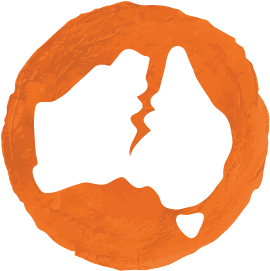
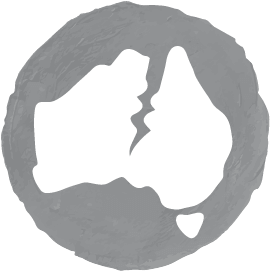
Injustice from the impact of colonisation.
Discover our curated collection of stories, articles and statistics that expose the injustices at the heart of our nation.
Who are Indigenous Australians?
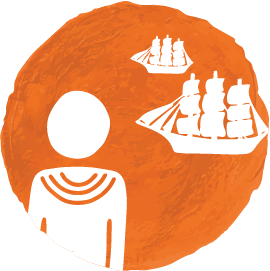
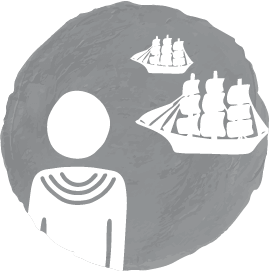
A past that shapes our story as a nation.
Tell stories that many Australians have never heard.
Immerse yourself in stories and articles to understand the connection between our nation’s past and present.
Busting the myth of peaceful settlement
Early missionaries to Australia
The civil rights movement in Australia
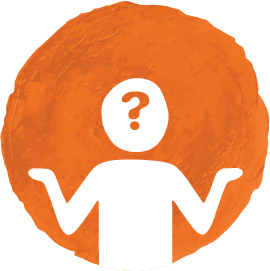
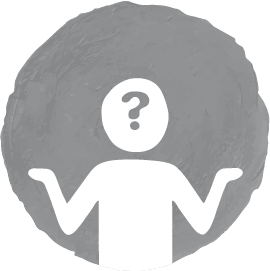
What’s it got to do with me?
Examines why this is relevant to every Australian.
Browse articles and stories that explore the ways we’re all connected, and what this means for us as Australians, collectively and individually.
What does this have to do with me?
Australia Day: answers to tricky questions
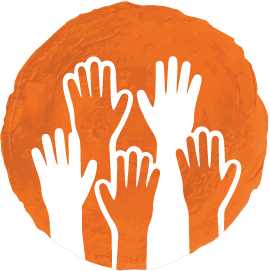
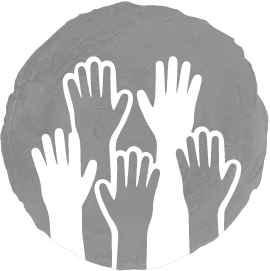
Everyone has culture. Know about your culture and value the culture of others.
Dive into stories and articles that explore the significance of culture and its role in building a brighter future together.
Welcome to and Acknowledgement of Country
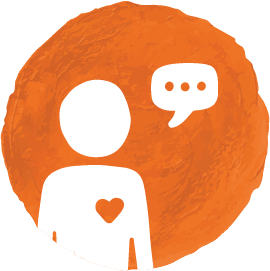
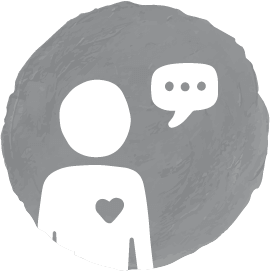
Steps we can take to build a brighter future.
Find inspiration in stories and articles that show even little steps can lead to big change when we do things together.
How do I get the most out of these resources?
The resources are designed to be flexible and modular, working around how you like to teach. You can use the resources exactly as they’re designed, or as a starting point from which to build your own lessons. Make them your own and use them to help you feel more confident in class.
Ready-made resources that save you time and help engage students
Make a difference in your classroom with easy-to-use, ready-made resources that will help your students understand First Nations stories, experiences and perspectives.
- Everything is ready to go
- Save you time
- Authentic learning
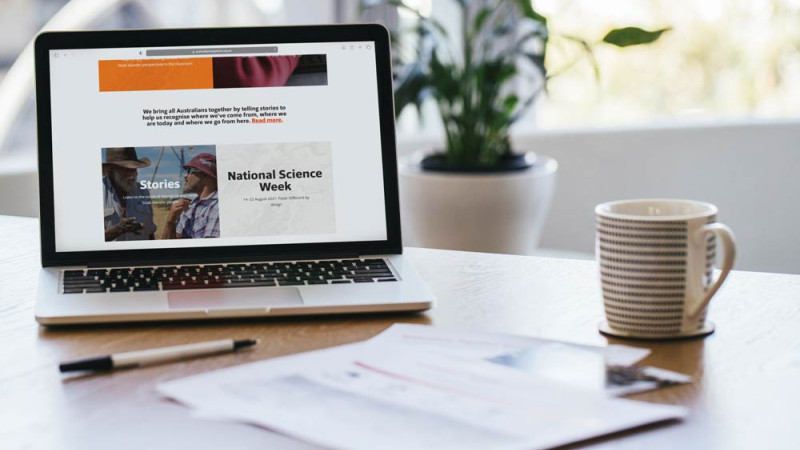
How will Australians Together continue to help me?
Change takes time and we’re here to provide the support you need over the long term. We’re constantly building new resources and we love to hear from educators like you. Feel free to reach out at any point and we can see how we can help. Together we can build a brighter future and a more united Australia for everyone.
Here’s why so many teachers love our resources:
- Everything is ready to go
Our resources include teacher guides and student handouts. - Save you time
Teachers love our resources as they it saves them time when lesson planning and they’re packed full of activities that really engage students. - Authentic learning
Teachers are following our resources’ responsive framework to confidently teach about Aboriginal and Torres Strait Islander histories, cultures and perspectives.
Have your say

Lets talk
We'd love to hear your feedback, comment or suggestions.
contact@australianstogether.org.au
Phone: (08) 7073 6499
PO Box 107
PARK HOLME SA 5043
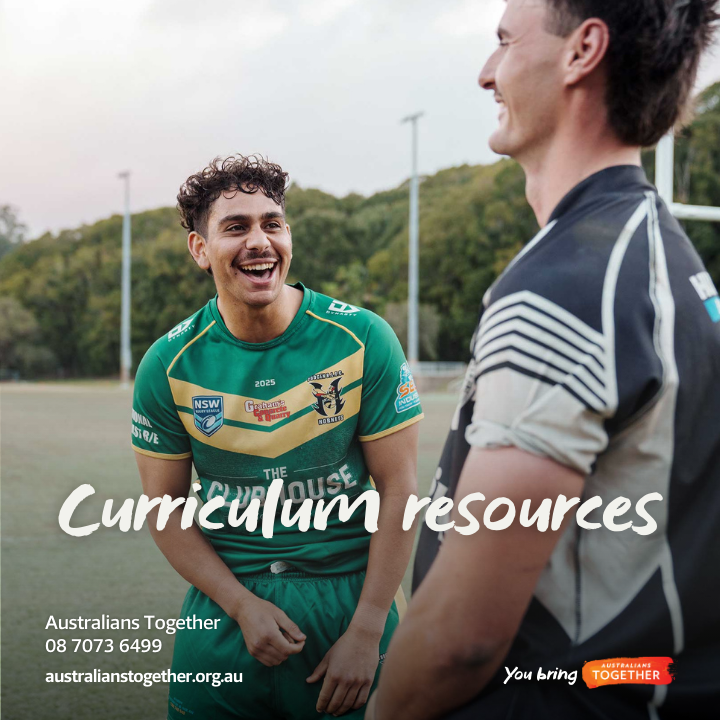
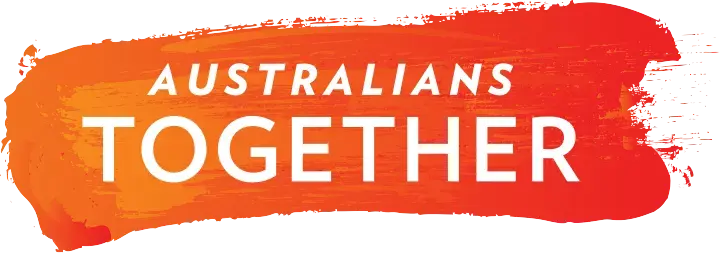
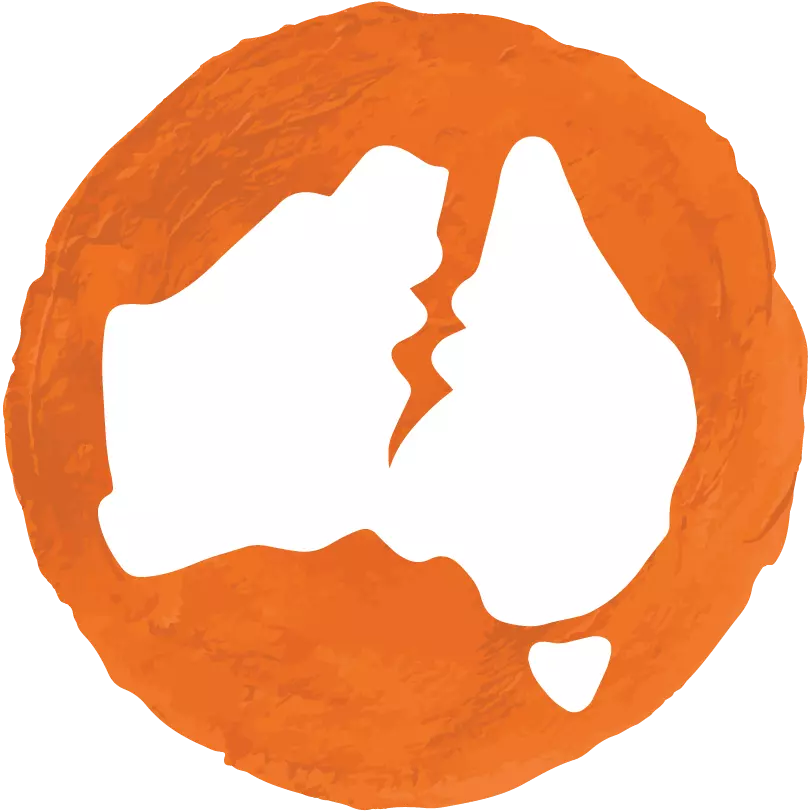 The Wound
The Wound
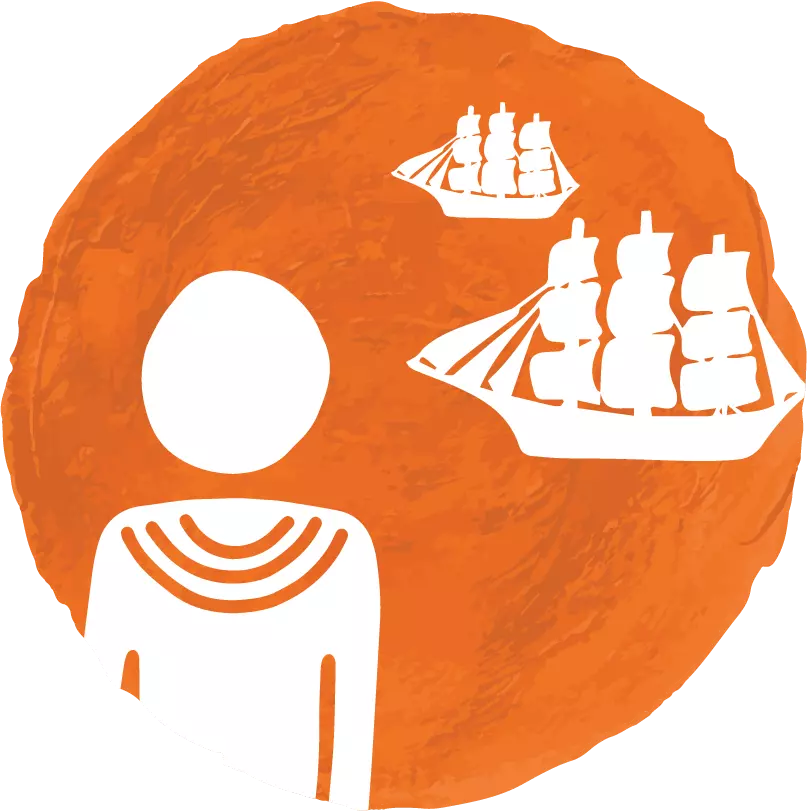 Our History
Our History
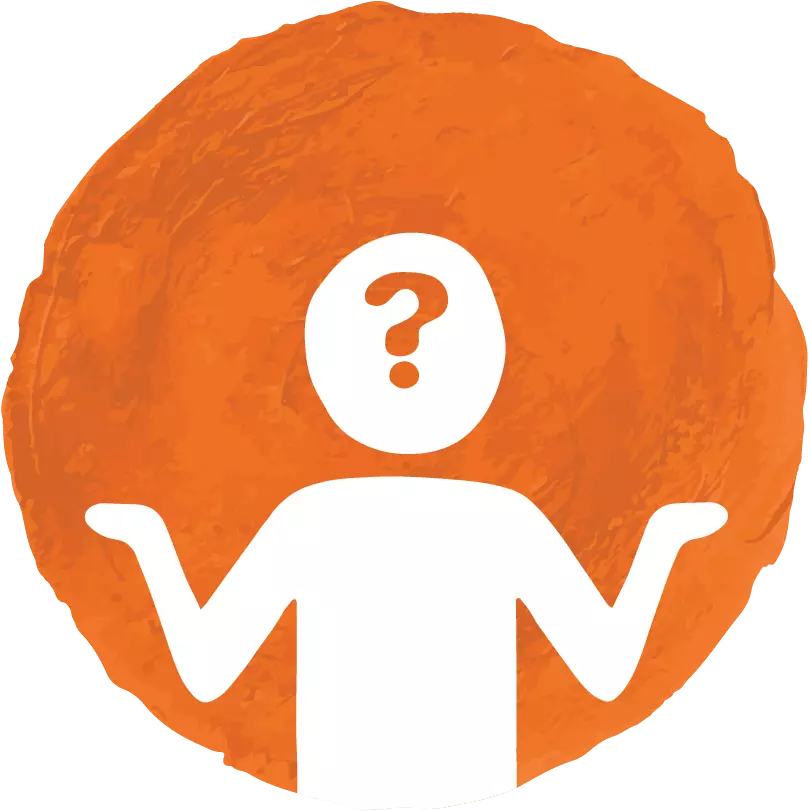 Why Me?
Why Me?
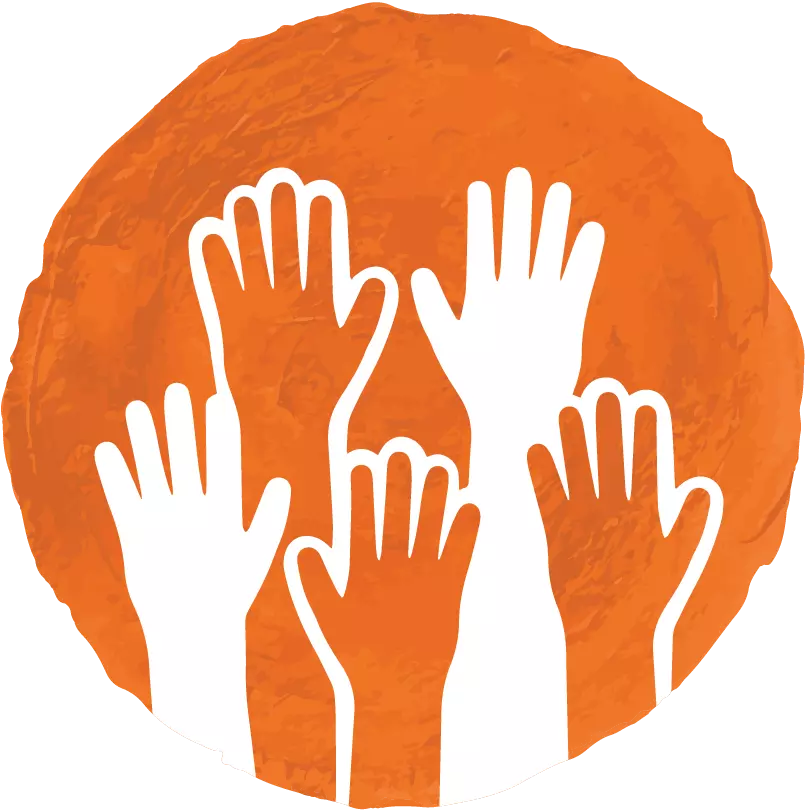 Our Cultures
Our Cultures
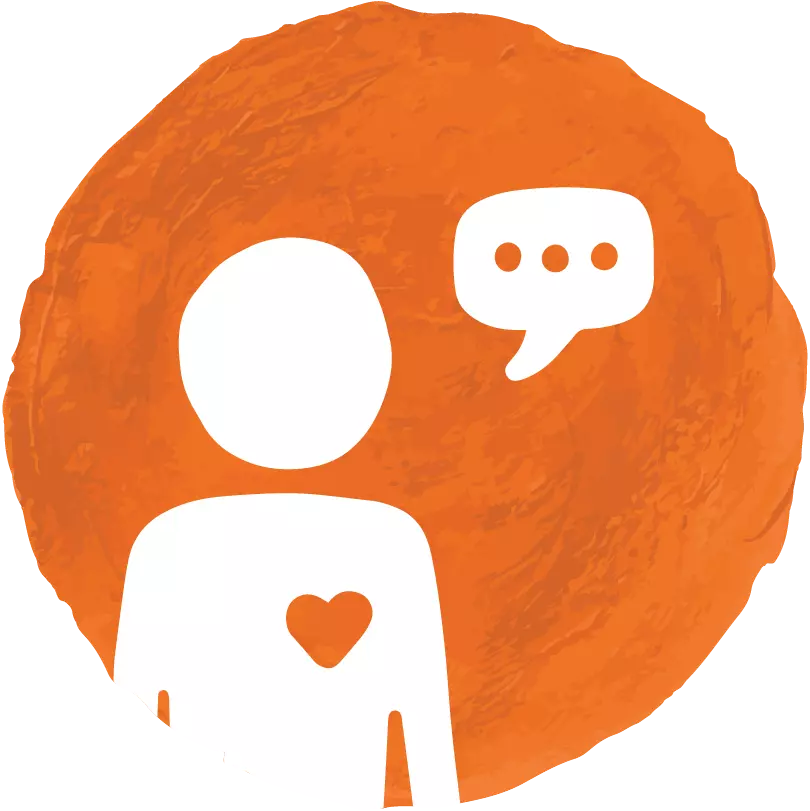 My Response
My Response





